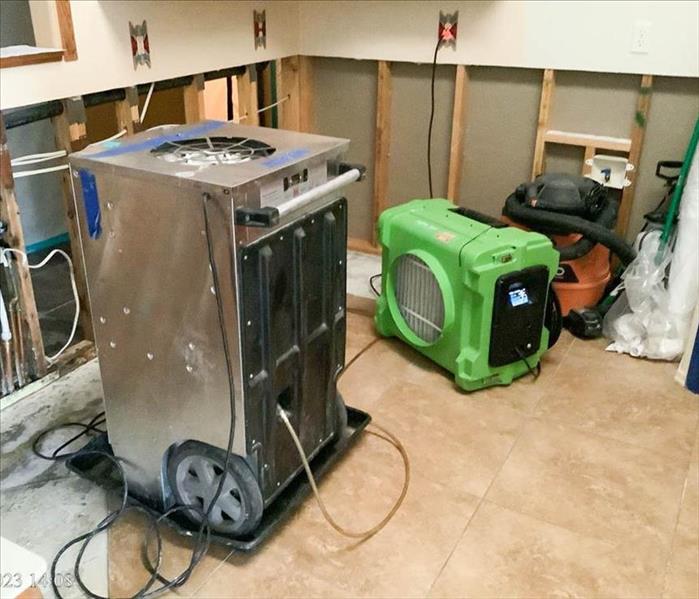The Importance of Dehumidification
10/14/2023 (Permalink)
Indoor air quality is a crucial factor in maintaining a healthy and comfortable environment for both residential and commercial spaces. High humidity levels can lead to a host of issues, including musty odors, mold growth, and other problems. This is where the science of dehumidification comes into play. By understanding the principles and benefits of dehumidification, we can restore and maintain optimal indoor air quality.
Humidity and Its Impact on Indoor Air Quality
Humidity refers to the amount of moisture or water vapor present in the air. It is typically measured as a percentage known as "relative humidity." The optimal indoor relative humidity level is considered to be between 30% and 50%. When humidity levels exceed this range, various problems can occur. High humidity promotes the growth of mold, mildew, and dust mites, which can trigger a host of issues. It creates a breeding ground for bacteria and viruses. Additionally, excess moisture can damage furniture, electronic equipment, and structural components of buildings.
The Science of Dehumidification
Dehumidification is the process of removing excess moisture from the air, thus reducing the relative humidity to a more acceptable level. The science behind dehumidification involves several key concepts.
Dehumidifiers work on the principle of condensation. As warm, humid air is drawn into the dehumidifier, it passes over a cool surface known as the evaporator coil. The cooler temperature causes the moisture in the air to condense into water droplets, which then collect in a reservoir or drain away.
Dehumidifiers utilize a refrigeration cycle similar to that of an air conditioner. The refrigeration system cools the air, causing the moisture to condense. The cold, dry air is then reheated before being released back into the room. This process reduces both humidity and temperature, creating a more comfortable environment.
Dehumidifiers are equipped with sensors that measure the humidity level in the room. Once the desired humidity level is reached, the dehumidifier automatically shuts off or adjusts its settings to maintain the ideal moisture balance. This precise humidity control ensures optimal air quality.
Benefits of Dehumidification
Dehumidification offers a multitude of benefits for indoor spaces. Maintaining proper humidity levels inhibits mold growth, preventing damage to furniture, walls, and other surfaces. It also helps to protect the occupants by reducing the presence of mold spores in the air.
High humidity can result in musty and stale odors. Dehumidifiers eliminate excess moisture, thereby preventing unpleasant smells and maintaining fresh indoor air. Excess humidity can damage furniture, artwork, and electronics. Dehumidification helps preserve the integrity of these valuable items, prolonging their lifespan.
Dehumidifiers can contribute to energy efficiency by reducing the workload on air conditioning systems. When humidity levels are lowered, it takes less energy to cool the space, resulting in energy cost savings.
Understanding the science of dehumidification provides us with the knowledge to restore and maintain optimal indoor air quality. By controlling humidity levels, we can prevent mold growth, eliminate odors, and protect valuable property. Dehumidifiers play a crucial role in this process, utilizing condensation and refrigeration cycles to remove excess moisture from the air. Investing in a high-quality dehumidification system can greatly improve the overall comfort and well-being of both residential and commercial spaces.




 24/7 Emergency Service
24/7 Emergency Service
